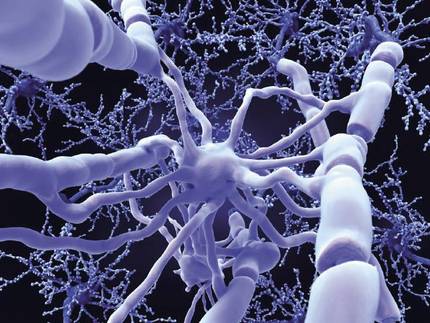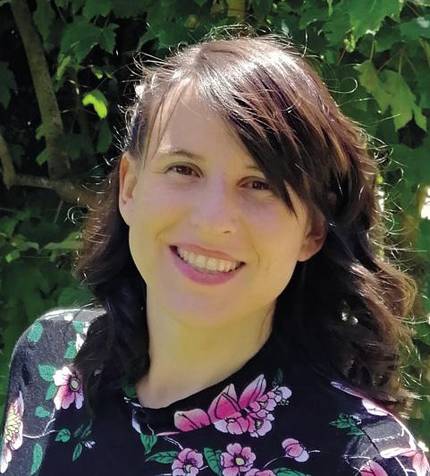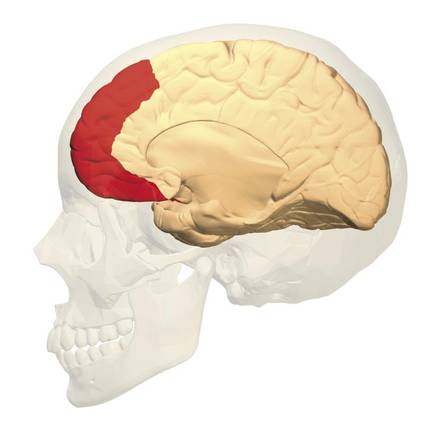Science of Adolescence
From a biological point of view, adolescence is based on the fact that the parts of the brain end their maturation at different times. Juan Ignacio Pérez Iglesias explained that “the lower parts of the crust mature before and there are the circuits of pleasure (prize circuits). These circuits are completely developed when children are between 11 and 12 years old, at puberty, while the front of the bark reaches 15 years later, approximately 30 years.”
In the development of the brain there are two phases: first a growth phase before and then a pruning phase. With this, synaptic joints between neurons are reduced, which implies the fixing of some functions and the disappearance of others.
To explain this, Iglesias sets an example: “This is seen very well in the pronunciation of languages, especially in tongues such as Chinese. If tonal languages are not learned from a child, then there is no way to pronounce well and many times to identify sounds well. Why? Because that capacity is lost by pruning the synapses.”
Pruning of neurons

In general, pruning occurs throughout childhood, while in the prefrontal cortex it is not: in this section the neuronal density is not left before birth or newborns, but increases until puberty. “And then the pruning begins,” says Iglesias.
Therefore, in the prefrontal cortex, in principle grey matter is very abundant, since it is that gray matter: synapsis, dendrites... Then, later than in other parts of the brain, the pruning process begins, which in turn begins to reinforce intracranial connections.
Iglesias explains how it happens: “The axons are surrounded by a lipid layer called myelin. This isolates them and ensures effective and fast communication. Because during adolescence, in the whole bark, but especially in the prefrontal cortex, the myelin is increasing, that is, the white matter is growing. The process is long and until the cortex ends it doesn’t work quite well.”
This is very important since the executive control function corresponds to the prefrontal cortex. “The work of the prefrontal cortex consists, above all, in evaluating different alternatives and, as a result of this evaluation, making a decision. That is why we can say, to a large extent, that this is also the core of moral decisions. And until it has fully developed, it cannot be decided well; adolescents know what gives them pleasure, but do not take into account their future consequences.”
Moral dilemma moral dilemma
The development of morals has also been analyzed from the point of view of evolutionary psychology. Professor of Psychology Naiara Ozamiz Etxebarria has mentioned Kohlberg's theory: “Lawrence Kohlberg was a follower of Piaget and divided the development of morals into stages. According to their age, the individual would be in one stage or another. For example, when making a moral decision, children give importance to prizes and penalties, looking at the benefit of themselves. Adolescents, for their part, also take into account the opinion of society and, above all, what the equals think.”
Ozamiz puts as an example the dilemma Heinz: A woman is about to die of a strange disease. A drug can save it, but it is in the hands of a pharmaceutical company and sells 20 times more expensive than it is worth. The husband of the wife, Mr. Heinz, collects all the money she can, but it is half what the company asks for. In search of solutions, to Mr. Heinz happens to steal the drug. In this case, would it be correct to steal?
Ozamiz has explained that children play for themselves, so they believe that if Heinz loves his wife, for example, stealing the drug is correct. Adolescents, on the contrary, also focus on other aspects and take into account social norms. “For example, a teenager could answer what would happen if he started stealing the whole world, they are still unable to understand that the person’s life is above all. Older people put the lives before the laws. Not everyone reaches the maximum level of morality, but on the last level would be those who would dare steal the drug.”
Construction of identity
He also highlighted Erik Erikson. According to Erikson, in the development of the person there are eight stages and in each of them one must face a challenge or a conflict. “Thus, adolescence is the time to define identity,” he said. “According to Erikson, it occurs between 12-21 years and if we overcome this stage well, the person will have a strong identity. However, if it does not exceed it well, for example, if it is based on projects and expectations of its parents, it will live a mortgaged future.” Although this is no more than an example, Ozamiz is clear that adolescence is key to creating a personal identity.
Pérez Iglesias coincides with the development of the prefrontal cortex: “I was wondering why this development did not happen before, why it took time for the second stage of life instead of childhood. I think it's for the energy the brain needs to develop; in childhood it needs so much energy, it can't develop all parts at a time. Almost half of the infant metabolism is needed by the brain for its development and functioning. This means that the capacity of the brain is limited for development and therefore it develops by parts”.
Pérez Iglesias explained an investigation that reinforces this idea: “There is an investigation that genetically compares chimpanzee and man, and it is observed that there are neopenic genes in humans, in chimpanzees they are not neopenic. That is, some genes that express themselves very late in the human being, in the second or third decade, are expressed much earlier in chimpanzees. This has to do with the difference between chimpanzee and man’s brains, and the biggest difference is that ours is much bigger and more complex, especially cortex.”
And that has to do with the number of Dunbar, according to Iglesias. The number of dunes indicates that the number of people we have relationship with is limited, not exceeding 140-150. “It is a very large quantity, much larger than chimpanzees and other primates. To have such a large network of relationships, cortex also has to be very large and complex (or vice versa, you never know what it is before). The development of these relationships focuses mainly on the prefamantal bark. That is why identity is built in adolescence, because identity is created with others, in relation to others and by interaction with others.”
“That is why teenagers give such importance to their image, because the opinion of others is key to defining themselves,” continued Pérez Iglesias. “That is why they need to be with their friends, they are ashamed when they are with their parents with their friends, they care what so many people have said... In short, they are consolidating their personality, and their control is carried by the prefrontal cortex.”
He explains that the energy requirement is at the base: they are so great that first the oldest and later most recent evolutionary parts develop. In addition, for Pérez Iglesias, it is logical that before physical skills and then social skills develop.
Dangerous Conduct Dangerous Conduct
In particular, Ozamiz has highlighted the interaction of adolescents with society and has pointed out that in these interactions there can arise crises, such as religious crises. Another characteristic is to live in the present: “They live in the present. They do not worry about the future and therefore can adopt risk behaviors.”
In this regard, Pérez Iglesias considers that the nature of this dangerous conduct should be taken into account: “Teenagers often enter into serious problems, especially boys. They show an anti-social behavior and are often related to drug use. This has to do with the circuits of pleasure: they know before what makes them pleasure, that the consequences that can have the search for that pleasure”.
And then: “Today it is quite clear that antisocial behaviors in adolescence are of two types. Some disappear with adolescence and others do not, belong to the personality of the person. In my opinion, from the point of view of the sanction, we would not have to act in the same way before both: we know that some are ephemeral, and that would have to be taken into account when imposing sanctions. That is, it is necessary to give someone who gets into trouble for being a teenager the opportunity to leave the vicious circle of sanctions and antisocial behaviors. That would be good for young people, of course, but also for the whole of society.”
Location of the problem
As Pérez Iglesias has pointed out in relation to drug use, Ozamiz also considers it important that adults understand that these behaviors are linked to adolescence, since, otherwise, there is a risk of considering them as a problem. “In this sense, the problem is not of them but of adults,” he says.
Ozamiz believes that adolescence does not have to be conflictive, but some may have problems. The most serious, in addition to the drug use mentioned, would be eating disorders, those related to self-image, emotional disorders and accidents. “But most of them have no serious problems and are facing the new situations they are facing,” he said.
As adults, Ozamiz explains that they can have stress. In extreme cases, and since stress acts on the hormonal system, a halt of physical development can occur due to interruption of hormonal flow. In normal development, and also by the action of hormones, sexual impulse increases and emotional disorders are frequent.
The changes that occur in the body and in character not only affect themselves, but also in the way society sees them, which affects their self-image. “It’s a crazy wheel.” Body image is of great importance and, in most cases, tend to look more ugly than they are. In this sense, self-esteem is altered and, therefore, sports or academic achievements become important.
In this context, and also influenced by the strength of advertising and fashion, obsessions can appear as the dedication of hours and hours in the gym and, in the most serious cases, food alterations, especially in the girls. “Anorexia, bulimia can appear and are very serious alterations. A 5-20% of cases of anorexia end in death and bulimia can leave sequelae for a lifetime in health.”
The risk of appearance of other psychiatric disorders is also higher in adolescence, sometimes associated with drug use: “It’s time to experiment, and that includes trying drugs. The first are alcohol, tobacco, and marijuana, and some also take drugs that are called harder. But these first ones can also have very harmful consequences, for example, many psychotic outbreaks are due to marijuana use,” said Ozamiz.
He says it is shown that schizophrenia can appear in vulnerable people for drug use, which is most likely in adolescence. “And there we also have a role, especially in prevention.”
Social part
According to the WHO, half of mental illnesses appear when the person is 14 years old, but most cases are not diagnosed until much later; the most common are depression and anxiety. Ozamiz gives a data: “Among young people, suicide is the third cause of death. Therefore, it is very important to prevent, diagnose and care on time. And that is the responsibility of the whole society.”
In this sense, Pérez Iglesias and Ozamiz share the idea that adolescence is a specific process that society must understand and that, if a beneficial environment is offered to young people, both they and society as a whole will have a good future.











